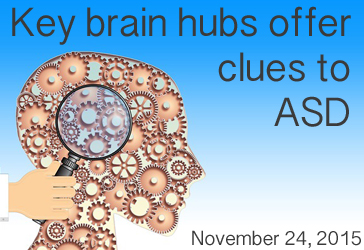Check out other stories from the Latest News
Brain Organization Ages Differently in Autism
By Chelsea E. Toledo, M.A. on November 24, 2015

Background: The human brain is comprised of an intricate network of interconnected regions. Of the hundreds of regions in the human brain, there exists highly connected central regions--or hubs--that link sparsely populated peripheral regions of the brain. Known as the “rich club,” these areas are thought to play key role in integrating information across the brain. Research has suggested that their connectivity may be different in people with autism spectrum disorder (ASD).
What’s New: On November 5, 2015, the journal Scientific Reports explored how organization of the rich club hubs differed in people with ASD versus those with typical development as they aged. The researchers compared brain connectivity data of children between the ages of 9 and 13 to that of a group of adolescents between the ages of 13 and 18. The results of their analysis indicated that organization of rich club hubs in the brain increased as the 36 typically developing children and adolescents aged, but that the same progress wasn’t observed in the 45 children and adolescents with ASD.
Why it’s important: This study adds to the findings suggesting that rich club organization underlies cognition, and that dysfunction in that organization could play a role in certain neurodevelopmental disorders. Future studies could illuminate the precise role of rich club organization and pinpoint how puberty affects its development.
Help me understand :
| Source(s) : |
| Tweet |

